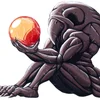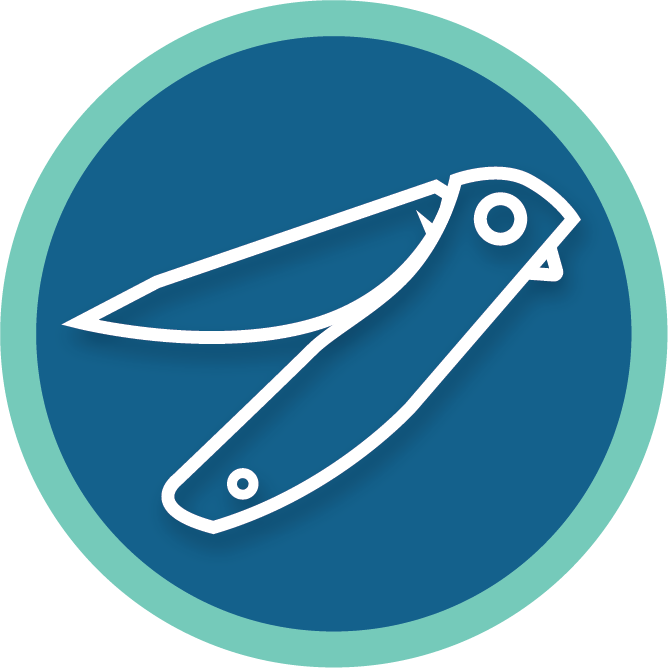Hey, was wondering if anybody might have any tips for me! I’ve been using a Worksharp Knife & Tool Sharpener MK2, and have this weird issue where my knives are coming out sharper on one side than the other.
I know that shouldn’t really make any sense, but I’ve got a knife right now that I have no problem shaving hairs off my arm with, but only with one side. If I flip it over, no matter what angle I approach with, I can’t knock away a single hair. The bevel is also significantly wider on one side, which I also can’t figure out how to correct but I’m sure is related.
I can’t tell if this has anything to do with the fact that the belt rubs against the steel in different directions when sharpening each side (up and into the blade on the left side, down and away from the blade on the right), or if perhaps this might be an error in technique on my part. As far as I can tell, I’m keeping the blade in line with the guides properly and not deviating significantly.
For what it’s worth, I’m working with a hawkbill blade. Meaning that I have to lower the knife as I draw it through the sharpener, to keep contact with the belt. I know this allows for a lot of room for error; I’ve been making an effort to ensure that I’m keeping the alignment correct the whole time, but it’s wholly possible that this may be where I’m messing something up.
Any ideas if I might be doing something wrong or something I could try to get a more even edge on both sides?


Well, the key to belt sanders causing problems is heat. You’ve got abrasives scratching metal at high speed.
That’s a lot of friction on a very small area. That friction on a bigger piece of metal is no big deal. But a knife edge gets very thin indeed. It simply can’t take the heat being generated at the edge and move it into the rest of the knife fast enough to prevent the edge, perhaps a few millimeters worth, from getting too hot.
This results in the heat treatment of the steel being undone. The little crystals of iron, carbon, and whatever alloying metals are present come apart from their neat little stacks and get disordered. The metal that’s left is more randomly arranged, so you can end up with very brittle (easy to break) or very soft (easy to deform) metal instead of what you started with.
Now, it’s only maybe half the width of a pencil lead at most, but that’s happening on the part of the knife that you rely on to cut things. It won’t stop cutting, but what happens is that it gets dull much faster than it otherwise would. This means that your knife not only wont last, but it needs sharpening sooner, which reduces the life of the knife.
By the time you would feel any heat, it’s too late. There are ways to mitigate that to some degree, but most people aren’t set up to water cool their sanders/grinders.
As far as the burr goes, there’s absolutely one still there. That’s the only thing that will cause one side of a knife to be duller than the other. The little V of a knife that is the edge, when the burr is absent, will always cut in either direction approximately equal. Equal enough that you’d have to do some very sensitive testing to tell the difference, and even that won’t be there on a theoretically perfectly formed edge.
You simply can’t remove a burr on a running belt. No matter how fine the grit, the speed involved curls the side away from the belt. Now, you could stop the belt, and use very low pressure strokes to remove the burr on that surface. Same as with a stone in that regard.
I can’t recall which model you said in the post, but most of the ones I’ve either used or seen used wouldn’t be my top pick up deburr on, but it should be doable as long as you go slow and the device is stable.
Unlike stropping on a piece of leather though, you do the movement with the edge leading, just like you would if sharpening on a stone. But you do it at a wider angle, and with the gentlest amount of pressure possible as you go. You’re wanting to mostly wiggle the burr without also doing much material removal as you go. There’s always some material removed, but with a light enough touch, it won’t be enough to cause an even smaller burr.
Tbh, I stopped using leather strops at all years ago based on some of the microscope images and videos that got shared at r/sharpening on reddit. Doing it on the stone is just faster and easier once you get a feel for the degree of pressure needed. So, if you can position things right to give you a stable surface to use, no need to mess with a dedicated strop, assuming you’ll keep using the belt grinder. I’ve had to improvise sharpening on sandpaper before, which is essentially the same thing, and you can definitely deburr on that kind of surface.
And, I agree, a loupe, or other magnifier that can get you to enough magnification to see the scratch pattern on the edge is a major plus. I had a usb microscope I was using for a while, and it’s lowest setting was 50×, and that was plenty for checking a burr. Overkill tbh. So a loupe should be about perfect.
Fwiw, all of this stuff I’m talking about here, I picked up from knifesteelnerds, Scienceofsharp, and the guys at r/sharpening for the most part. The subreddit is essentially useless now, but there’s info on it for how to access the discord server the really knowledgeable guys migrated to.